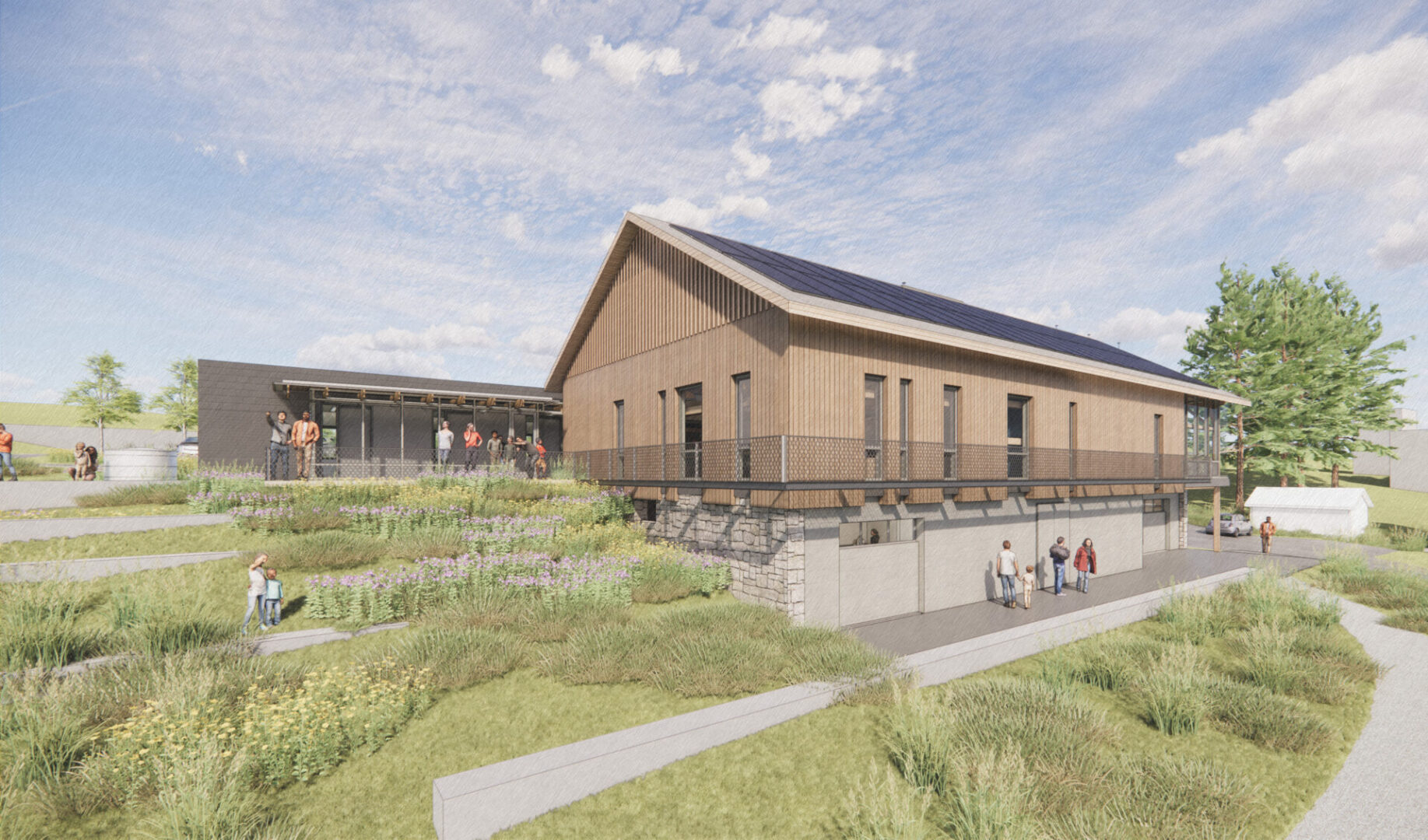More grant funding is on the way to support ClearWater Conservancy’s development of a Community Conservation Center along Spring Creek in Houserville.
After receiving $2 million in federal funds last month, the project was recently awarded two state grants totaling more than $1 million. In early November, the Redevelopment Assistance Capital Program announced $750,000 in funding for the 12,000-square-foot conservation center, and this week the Department of Conservation and Natural Resources’ Community Conservation Partnerships Program awarded it $300,000.
“”I am proud to support this new center which will be a cornerstone for community building and environmental stewardship,” state Rep. Paul Takac, D-College Township, said in a statement announcing the most recent grant. “It will provide new and unique opportunities for folks to engage with nature, learn about conservation and actively participate in hands-on projects to protect our environment and the Spring Creek watershed. This long-awaited and innovative project will create jobs, attract visitors and showcase the incredible natural beauty of our region.”
ClearWater Conservancy, the State College-based nonprofit dedicated to natural resource preservation and restoration, plans to create the conservation center along a quarter-mile of Spring Creek on the 9-acre Rockenbeck parcel at 1601 Houserville Road, which it acquired in 2022 to permanently conserve the historic farm property and stream bank.
The new center will create a community hub for local conservation. Indoor facilities will provide office space, equipment storage and gathering and training areas, while outdoor demonstration areas will showcase best practices for restoring, conserving and stewarding land. The center will offer year-round space for ClearWater staff to collaborate with the community.
The property is also expected to function as a connectivity hub for walking and biking routes.
Construction is expected to begin in 2025.
“Staff and volunteers of ClearWater Conservancy are planning an expansion of conservation services to meet growing community needs,” Executive Director Elizabeth Crisfield said in a press release. “We are nearing the completion of design and are looking forward to beginning construction in the new year. We can’t wait to move in and open the center to the community in 2026.”
In late 2023, ClearWater launched the public phase of a $10 million fundraising campaign for the project. To date, $9 million has been raised.
““ClearWater is delighted about the opportunities this center will create for volunteers, local businesses, outdoor enthusiasts, partners and future generations of residents in the region,” Crisfield said. “The Community Conservation Center will provide a space for the ClearWater community to meet, work, collaborate and inspire one another in the shared aspiration of a healthy and thriving community and environment, starting in the Spring Creek Watershed.”
ClearWater also received this week a $93,000 DCNR grant to install six acres of riparian forest buffers along waterways in the Susquehanna River Watershed. The funding will help protect water quality, reduce soil erosion and enhance wildlife habitats in the region, according to the conservancy.
Riparian buffers are the transitional area between land and waterways. Planting native trees and shrubs provide natural filters that trap pollutants from stormwater and agricultural runoff, preventing them from reaching the water They also provide wildlife habitats, stabilize stream banks, improve fish habitat and reduce flooding and soil erosion.
“We’re so grateful to receive funding from DCNR to continue our work restoring forested riparian buffers in the region,” Jennifer Dombroskie, Riparian Program manager at ClearWater Conservancy, said in a press release. “These buffers will not only protect our local waterways but also contribute to the overall health of the entire watershed, benefiting communities, wildlife, and future generations.”



